When the Melbourne Public Library first opened its doors in 1856, the colony of Victoria was a man’s world. Male immigrants far outnumbered female, with The Age reporting in 1854 that “the proportion of males to females may be set down as fully three to two”.1
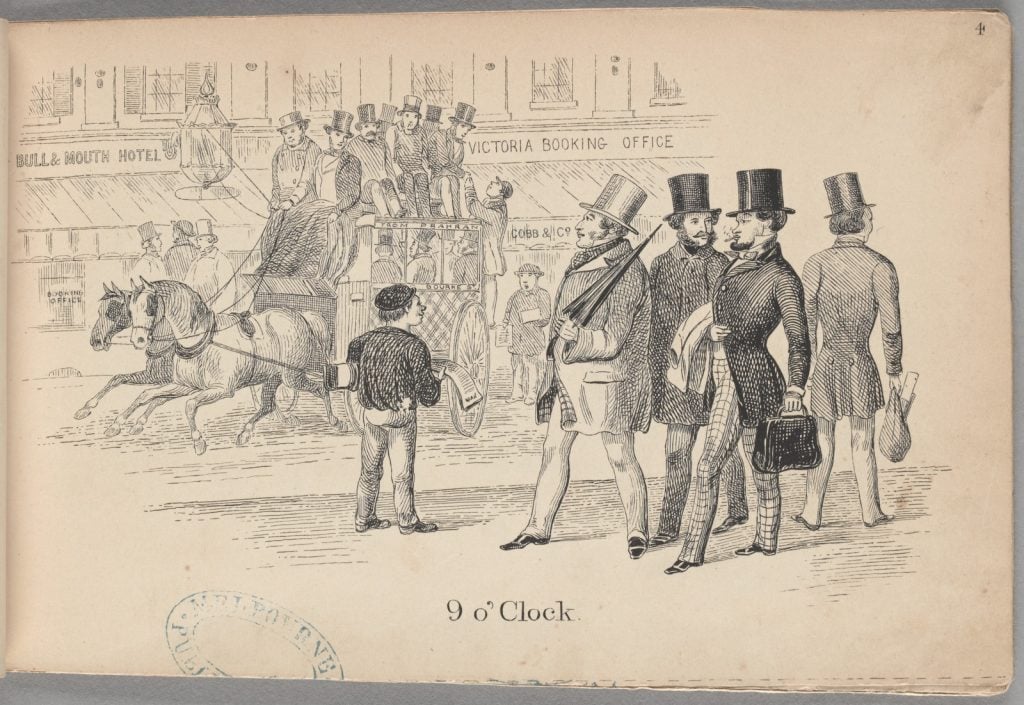
Women were discouraged from walking in the streets unaccompanied, and if they did were often assumed to be prostitutes or disturbing the peace.2 Community cultural resources were limited in the developing city, and even more so for women.
The new Melbourne Public Library gave all colonists over the age of 14 an opportunity previously lacking – free access to reading materials and knowledge. Prior to the Library’s opening, women and men alike could access membership at private circulating libraries like the Mechanics Institute on Collins Street (now the Athenaeum Library).
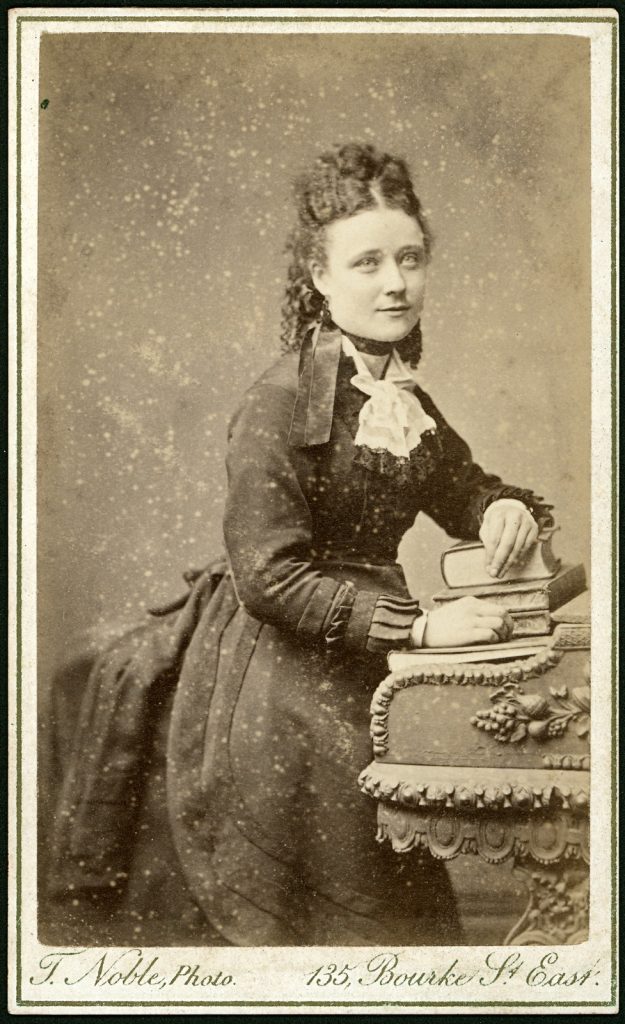
But in mid nineteenth century Melbourne, rates of female membership for subscription libraries were low, with subscriptions often funded and controlled by husbands and out of reach for middle class or unmarried women.3
The Library’s opening prompted excited reviews from the press, who welcomed its collections as ‘…most valuable, and superior to any library previously accessible to the Melbourne public … We particularly approve of the liberty which is given to visitors to the Melbourne Library to pass from shelf to shelf and take down any volumes they require…’.4
We hail it at once as a proof and a pledge of this country’s advancement. We earnestly recommend the advantages it freely offers to every man in Melbourne…This is true civilisation!
The Public Library, The Age, 12 February 1856, p. 2.
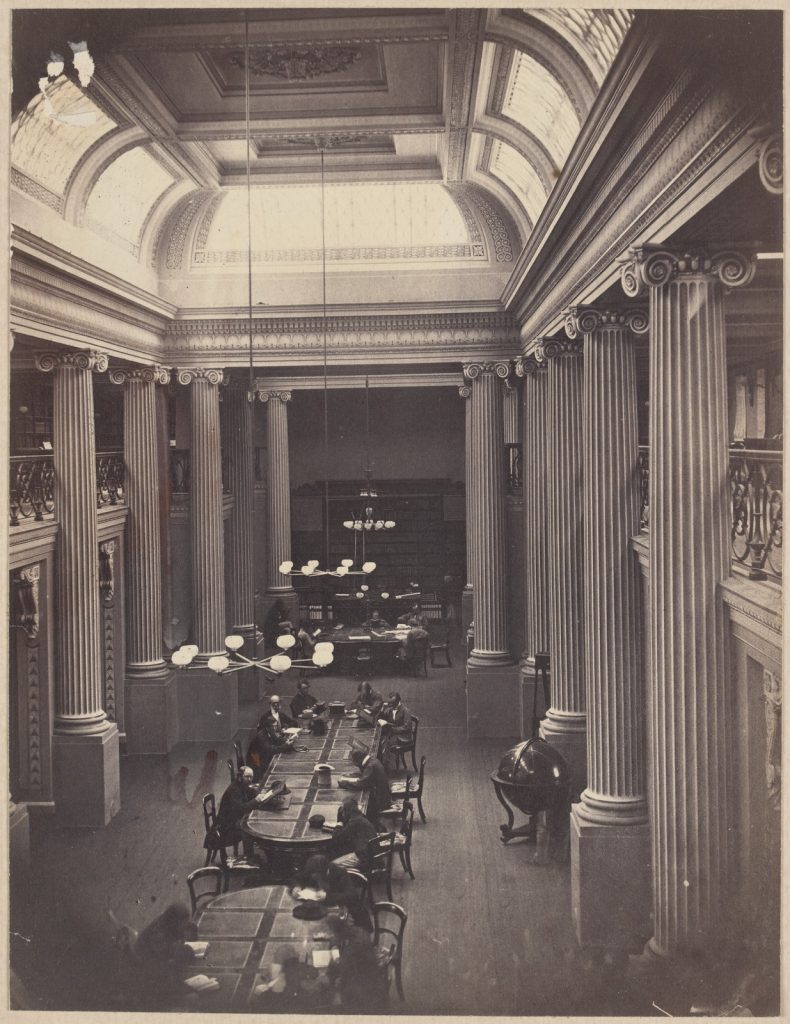
The original part of the Library consisted of the central portion of the Swanston Street frontage, but within a few years plans were underway to expand.
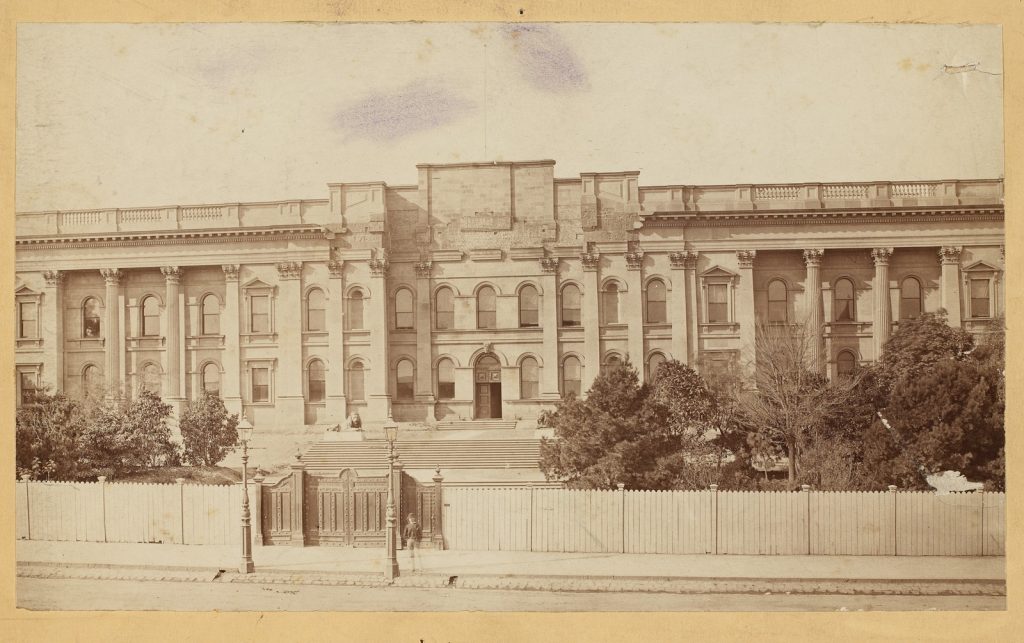
In 1858, prominent entertainer and politician George Selth Coppin raised the question at the Legislative Assembly as to ‘whether it were the intention of government to devote any portion of the new building…for a Ladies’ reading room?’.5 Ladies’ reading rooms in libraries were a common occurrence at the time, including at the nearby Mechanics Institute. Coppin’s request struck a chord in the community, prompting an outpouring of appreciation from the press and women in Melbourne:
Mr Coppin’s motion of a ladies’ reading-room in the public library was a response to a public wish which has been often expressed. As we are fortunate enough to possess a really free library, it is a most indefensible limitation of its advantages to virtually deny their enjoyment to women. 6
The Age, November 15 1858, p. 3.
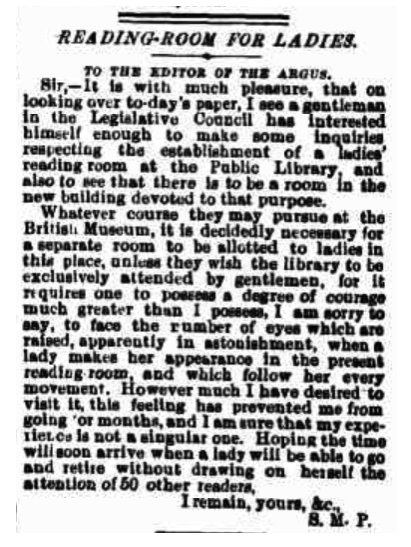
…it is most unpleasant, when visiting the Library, to be stared at as a curiosity. Therefore, to prevent that evil, and at the same time to allow of females sharing the advantages of the institution, it seems necessary, under existing circumstances, that a separate room should be provided, until such time shall arrive when men will not consider a woman who reads anything more solid than a poem or a novel as meddling with things that do not concern her.7
The Argus, November 25 1858, p. 7.
The demand was already intended to be addressed – the 1858 Report of Trustees for the Public Library declared a bid for further funding to complete extension works of the Library building.
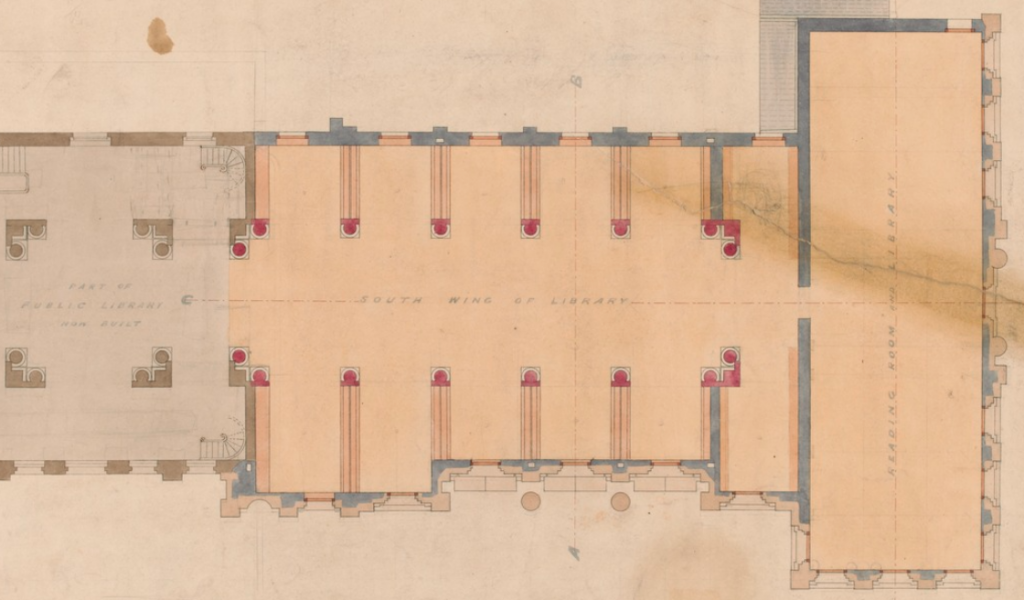
The extension to the existing reading room – now the Ian Potter Queens’s Hall – was to include a pavilion, the entirety of which was to ‘exclusively be used as a ladies’ reading room’.8 The architectural drawings for the 1859 extension showing the pavilion are held in the State Library Victoria collection, but it was not constructed.
Instead, the extension contained an area ‘dedicated to the ladies’. While we have not been able to find an image of this area, we do know what reading materials the ladies had ready access to.
The 1861 catalogue of the Melbourne Public Library contains a map of the Queen’s Reading Room, showing where different subject areas could be found on the shelves, including British and European history, Botany and agriculture, Literature, Geography and natural science.9
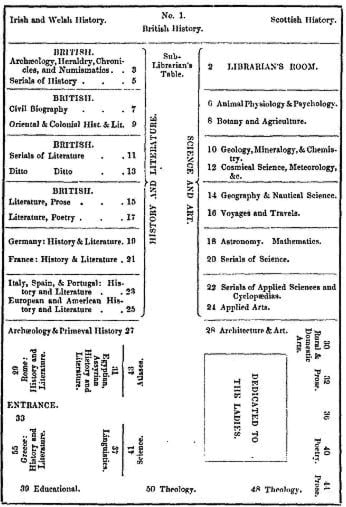
Melbourne Public Library, [1861], p. XVI.
In the south west corner of the room the space ‘dedicated to the ladies’ housed topics deemed ‘suitable’ to the interests of female readers – Theology, Poetry and Prose, Rural and Domestic Arts, Architecture and Art.
Not a separate room or building as originally intended, the ladies’ area was separated from the general reading room by a curtain, which was a source of happy novelty to some10, and revered as a ‘sanctum’ by others. 11

As time went on, not everyone found the dedicated ladies’ space to be the best solution for welcoming women into the Library. It was increasingly felt that women that should be able to wander the library as freely as men did, instead of being partitioned off in a separate area.
Nowadays one often sees ladies helping themselves to books from various quarters in the library, and sitting down to read where they find it most convenient; expressing a tacit dissent from the idea that they should confine themselves to a “ladies’ room”, furnished with picture books, suitable to their limited understandings.
The Public Library, The Herald, 30 September 1874, p. 2
Despite Chief Librarian Thomas Bride’s recommendation in 1882 that the Library make space for a ‘ladies’ reading room twice the size of the present’12, there is little further mention of the ladies’ compartment to be found. With the Library now sharing its site with the Museum and Gallery, it’s likely floorspace was also in greater demand. The 1886 expansion of the south wing – the new reading room, Barry Hall (now the Wheeler Centre for Books, Writing and Ideas) – provided space in the library for a further 26,000 books. In these plans there is no area ‘dedicated to the ladies’.
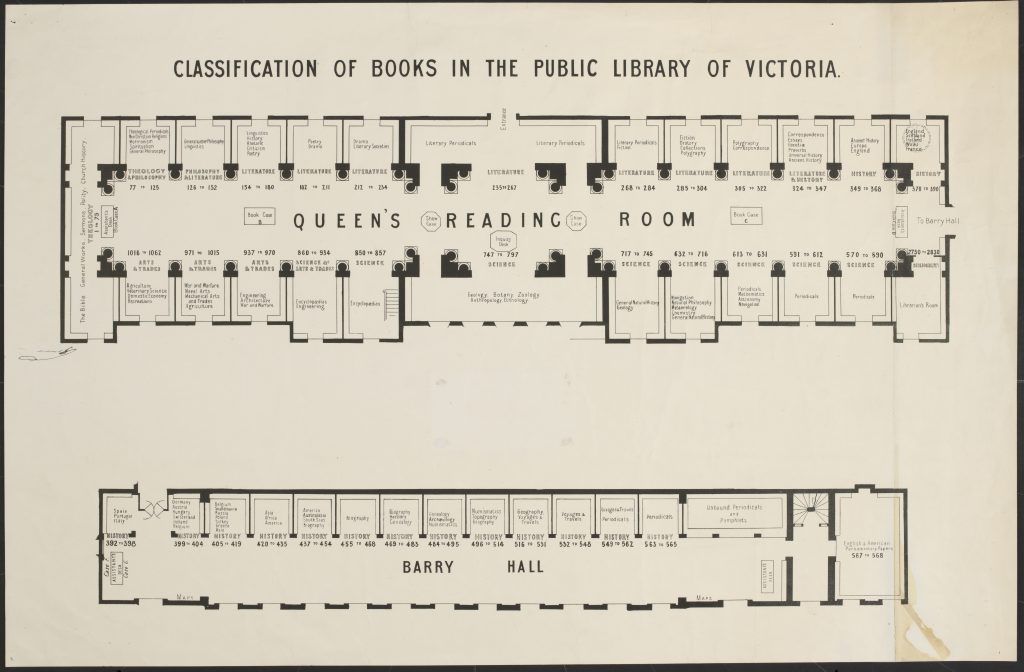
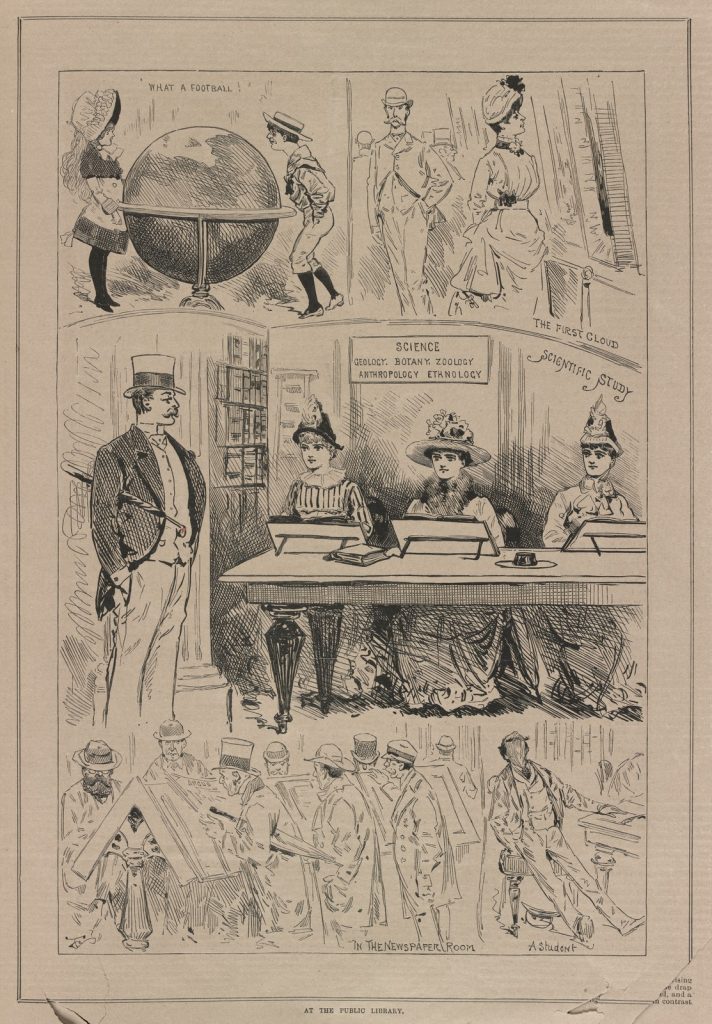
The Public Library ladies’ room has left no physical trace on the newly restored Ian Potter Queen’s Hall, which provides an open, accessible space and collection to be enjoyed equally by all who visit.
More to explore
Further reading
Research guide: State Library of Victoria – history
References
Additional images used in video.
- Social Condition, The Age, 24 November 1854, p. 5.
- Women in the city, eMelbourne, https://www.emelbourne.net.au/biogs/EM01632b.htm
- Bowman, Margaret, 2017, “Ladies and Libraries in Nineteenth-century Melbourne”, Victorian Historical Journal, iss. 288, vol. 88 no. 2, https://www.historyvictoria.org.au/wp-content/uploads/2019/09/VHJ-Vol-88-No-2-Nov-2017.pdf
- The Melbourne Public Library, The Argus, 20 February 1856, p. 4.
- Victorian Parliamentary Debates, Legislative Assembly, vol. 4. 16 November 1858, page 310-311. Retrieved from https://www.parliament.vic.gov.au/papers/govpub/VPARL1858-59No22.pdf
- Summary for England per Emeu, The Age, November 15 1858, p. 3.
- Reading room for ladies, The Argus, November 25 1858, p. 7.
- The Public Library, The Argus, March 7 1859, p. 5.
- The catalogue of the Melbourne Public Library for 1861, Melbourne Public Library, [1861], p. XVI.
- Aspinall, Clara, Three years in Melbourne, 1862, p. 67.
- The Public Library, The Argus, 11 November 1868, p. 5.
- The Public Library, The Age, 22 July 1882, p. 1 (Supplement to The Age)

